According to Mr. Money Mustache, bikes “will probably turn out to be the best thing ever invented for humankind.”
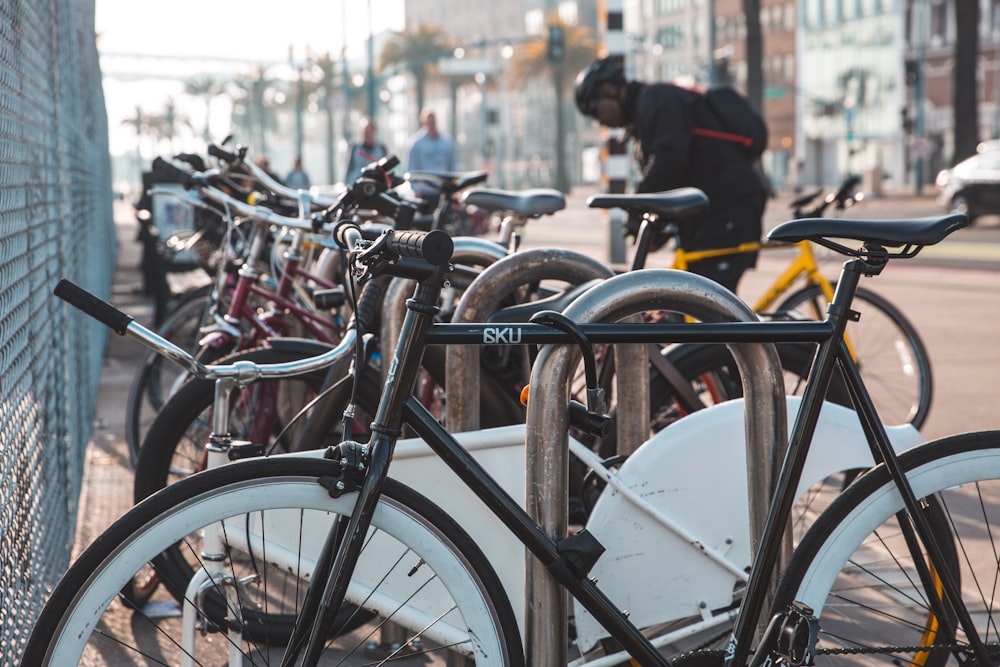
After reading many posts on Mr. Money Mustache about the virtues of biking, I was inspired to get much more serious about my own sporadic bike commuting habit.
The results have been amazing! I show up to work with a smile on my face, blood pumping through my brain, and a spring in my step.
My 5 mile commute consists of a pleasant ride through an old neighborhood full of trees that takes me to the greenbelt. The greenbelt is a bike path that runs along a beautiful river in the shade of the cottonwood trees. The sounds I hear are the rushing river water and the birds singing. In the spring I smell the blossoming flowers that seem to be everywhere. Every fall I’m amazed at the colors of the leaves in the bright, clear, crisp air. When other people go by on their bikes or on foot they smile and wave.
Try to show up to work in a bad mood after a commute like that . . . you can’t do it!
Contrast that to the experience of commuting by car. You sit in traffic. You get stuck at stoplights. You sit in more traffic as you get rerouted due to construction. The sounds you hear are of car horns and engines. The smell in the air is car exhaust. Nobody smiles, but they just might honk or flip you off. You never know exactly how long the drive will take. Better check the traffic report. Consequently you are frequently running late, which elevates your heart rate and gets those stress hormones flowing.
Try to go on a commute like that and show up to work in a good mood . . . it’s very hard to do!
Biking can often be faster than driving. Cars need to circle around and look for a place to park, and maybe even pay for the privilege of stopping (parking) the car! Parking lot full? That sucks if you’re driving a car, but no big deal if you’re on a bike! Just roll right up front to your free VIP bike parking spot!
“Gee Mr. DS, biking sure sounds pleasant. Maybe I’ll try to ride my bike a couple days this year.”
You can do better than that! Biking to work a couple days a year would just be a novelty. To get the dramatic life benefits that are possible I suggest doing your best to bike every day! Nobody is perfect, but an every day bike commute should at least be the goal. You won’t regret it!
The truth is, bikes are good for you in many ways. They make you healthier (exercise = healthy, duh), wealthier (switch to bike commuting and save BIG on car costs). and happier too!
Healthy
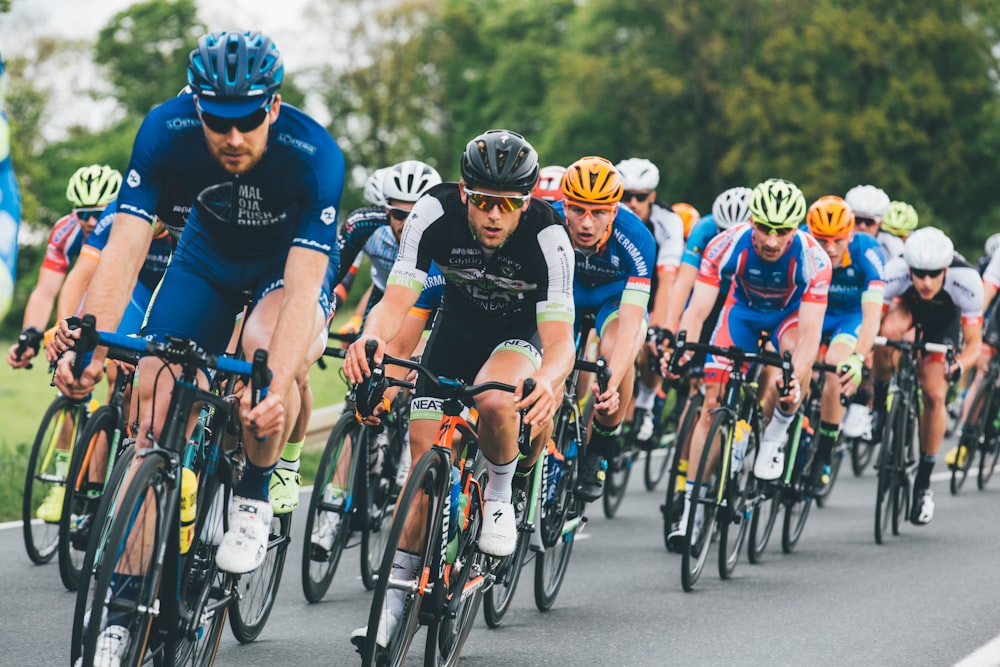
Everyone knows you are supposed to exercise every day. Where in a busy adult work schedule are you going to fit this in though?
You bring a gym bag in the hope of getting a lunch workout at the expensive gym adjacent to your office, but then a meeting runs long and you don’t have enough time left in the lunch hour. Bummer.
One good solution is to wake up early and use the time that you control (the morning). Another is to take something you have to do anyway (commute), and use that time to also get your daily dose of exercise.
This is incredibly important since Americans only average 2 hours of exercise per week.
“But isn’t biking dangerous? What if I crash???”
Everything is dangerous. Driving is especially dangerous. It turns out though that all the health benefits of biking actually outweigh any minor dangers when compared to a car commute. That’s why people who bike to work live longer! If you think about it that way, the dangerous thing to do is NOT bike to work!
Wealthy
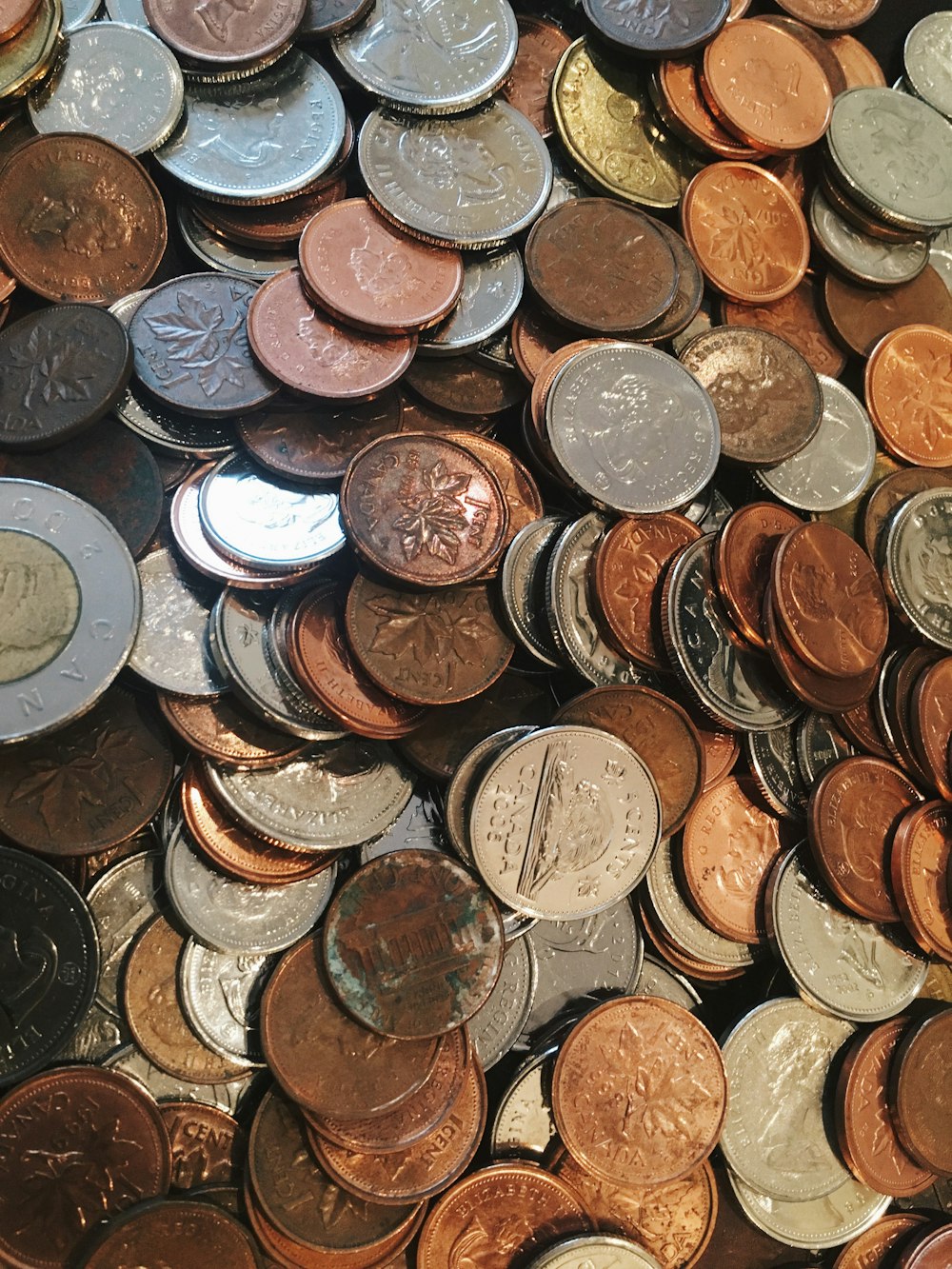
This article by Mr. Money Mustache (MMM) does a very good job of describing the cost of commuting. MMM concludes that each mile you commute to work in a car costs the average driver $795 in commuting costs per year.
For my own delightfully short 5 mile commute that means I would spend about $4,000 per year. Ouch! And that was for a short commute! Run those numbers for your 30 mile commute and you’ll see why you are not wealthy!
What happens if you instead switch to biking? That reduces your expenses by $4,000 per year! This doesn’t even include reduced medical costs due to adopting a healthier lifestyle! As I showed in my article on saving, you can multiply this annual expense by 25 to see the lump sum amount that you are effectively depositing into your investment account the moment you switch to full time bike commuting . . . $4,000 x 25 = $100,000!!!
I got paid $100 grand to ride my bike! Woot! My dream of becoming a paid professional cyclist has come true!

Happy

The third major benefit to biking is that exercise makes you happy!
Biking lets your mind have time to think, and it lets you have time to enjoy being outside. You’ll show up to work with a smile on your face and blood pumping through your brain, instead of showing up stressed about traffic and pissed that you got cutoff on the highway.
“OK, I can see how biking on a nice spring day can make you happy, but what about when it’s raining, or snowing, or icy??? How on earth would biking in those conditions make me happy?”
When the conditions are less than pleasant, biking does become a challenge. However, overcoming challenges is what life is all about!
Bike to work on a snowy day and your coworkers may look at you like you are crazy, but the sense of accomplishment will make you feel alive . . . and yes, happy.
We should all do something at least once a week that makes our coworkers look at us like we are a little bit crazy!
“A sense of accomplishment sounds great, but what use will that be if my clothes are soaked from the rain, or if I crash my bike in the snow or ice?”
There you go worrying about challenges again! Instead of worrying, let’s look at some solutions:
Challenges and Solutions for Bike Commuting
Cold
A comment I often get from coworkers is, “Oh my god, I can’t believe you rode your bike! It’s freezing out there!” It turns out that this is an easy challenge to solve.
Humans have lived, worked, and played in cold environments for a long time!

Source: John Tyman
It turns out that there is an amazing invention that solves the problem of being cold on a bike (or anywhere else). Not only does this invention keep you warm, but it consumes no energy while doing so! It’s light weight and portable.
What is this magic invention? Clothes!!!
If you are too cold, it just means you need to put on warmer clothes.
Below is the setup that keeps me cozy on the really cold (0F is really cold in my book) bike commutes to work. Scale back as necessary for warmer temperatures, or add a layer or two if you live somewhere colder.
*Note that I have provided links to products below to help point you in the right direction. Some of these links (and links elsewhere on the site) are affiliate links. If you click them and decide to make a purchase I may receive a small commission, at no cost to you.
- Warm work boots with warm socks
- I am currently wearing a pair of boots from Duluth Trading Company.
- I like Darn Tough Socks.
- Supposedly they are warranted for life and they will replace them for free when they wear out. I haven’t gotten to test the warranty yet though because these really are darn tough!
- Since they are made of Merino wool they are very comfortable and somehow seem to never smell bad!
- Waterproof shoe covers if the ground is wet or snowy
- Especially important if your boots or shoes aren’t waterproof.
- Long underwear
- In the dead of winter this is key. MMM actually refers to these as an oil well in your pants for their ability to help you bike and to keep the thermostat lower.
- Work pants (khakis, jeans, etc)
- I cycle between 2 pairs of Mountain Khakis. They are durable, comfortable, and they look nice.
- Waterproof over-pants if the ground is wet or snowy or if it’s raining
- Dress shirt, or polo shirt, or whatever shirt you wear to work.
- Warm fleece
- I have a Patagonia R2 full zipper fleece that is incredibly warm and comfortable. That said these are a little spendy.
- There are many less expensive options, such as this one from Columbia.
- Rain shell with hood
- Tuck the hood under your helmet for rain/snow. This will keep your head warmer than if you put the hood over your helmet. Just let your helmet get wet.
- Aim for something in a bright color to help you be visible in traffic through people’s rain or snow covered windshield.
- Warm mittens
- Mittens are much warmer than gloves. It’s best to overdress your hands a bit since they will be the first things to get cold.
- Beanie
- Look for something non-cotton.
- Also no weird bobs or tassels on top. It has to fit under your helmet.
- Clear glasses to keep rain/snow out of your eyes
- This was the item that made the biggest difference for me. Prior to finding these (super cheap on Amazon!) I would have to either squint or wear my dark sunglasses in the dark to keep the rain/snow out of my eyes.
- Helmet
- You don’t need to spend a ton of money on this. They all go through the same safety testing (or so the person at the bike shop told me). The main difference with the super expensive versions is just that they are lighter and have more air holes to keep your head cool.
Although I have linked to new items above, to save some money you could try to shop at thrift stores. I have had particularly good luck at thrift stores located in fancy ski towns. The residents in those towns seem to get rid of a lot of nice clothing!
No matter where you buy your gear, the return on investment (ROI) on these 1 time purchases is huge. There is the savings on automobile expenses, and there is also the happiness ROI that you will get by turning your commute into one of the best parts of your day.
Hot
“OK Mr. DS, I get that putting on warm clothes makes biking in the cold easy and fun, but what about the heat? I don’t want to show up to work sweaty. You can only take off so many layers before you reach an indecent level of nudity!

There are 2 main ways you can deal with the heat:
- Postpone your shower until after your commute.
- Take measures to avoid excessive sweating.
Postpone the Shower
If you are lucky enough to work at a location with a shower, then you can just bike wearing shorts and bring your work clothes to change into after showering. Problem solved!
“But our office doesn’t have a shower!”
… Then why did you take the job there? 🙂 Just kidding . . . sort of.
I would be hesitant to accept a job at an office building that did not have a shower. It’s that big of a deal to me. It’s not just about the commute. How will you clean up after your lunch time run or morning workout en route to work? Working at an office with a shower is a must.
If you just can’t swing that, perhaps try a sponge. Ultra-runner Dean Karnazes would apparently duck into a restroom stall with a wet sponge and towel and give himself a sponge bath after hot weather runs.
If you really don’t have the work shower option, and you don’t fancy a bathroom stall sponge bath, there is another way to make hot weather bike commuting work:
Minimize Sweating While you Ride
I prefer showering at home, so unless it’s REALLY HOT here is what I do to avoid excessive sweating while biking to work:
- Bike slow
- What’s your rush? Just leave a little earlier for work, downshift a couple gears, and take your time. Go slow and enjoy the ride.
- Keep your heart rate down. This is probably the best way to reduce sweating.
- On the way home you can pick up the pace since it doesn’t matter if you’re sweaty when you get home :).
- Ice water
- Fill your water bottle all the way to the top with ice before adding water. having some ice cold water to sip while you ride will help keep you cool from the inside.
- Get your commuting backpack off your back
- If you use a commuting backpack, the sweatiest area will be your back. The backpack will prevent air from circulating. Some backpacks claim to have a design that still allows air to circulate, but don’t believe the hype. I’ve not found any that actually work.
- I use a rear bike rack. I purchased this almost a decade ago for about $30 and it’s still going strong.
- I clip two open top grocery style panniers to the rack and put my backpack inside one of them.
- You could also get waterproof pannier bags in lieu of a backpack, but I actually prefer the the open top panniers paired with a backpack that fits into one of them. The open top bags are much cheaper, and using a good waterproof backpack will still keep all your stuff dry. Plus you can always put your backpack on your back in a pinch to increase your rear cargo space for that big grocery shopping trip on your way home.
- Ride early
- Early morning is the coolest time of day, so if you have the flexibility, time your ride for when the weather will cooperate.
- Bring a change of clothes
- You’d be surprised what a change of clothes and some deodorant will do, even without a shower! I’m not suggesting that this is as good as a shower after a hard pedaling ride in 110F heat, but combined with the above pointers this can help a lot.
- Wear a cotton shirt and shorts on the commute to really soak up the sweat. Then swap these out for work clothes and deodorant when you get there!
Rain
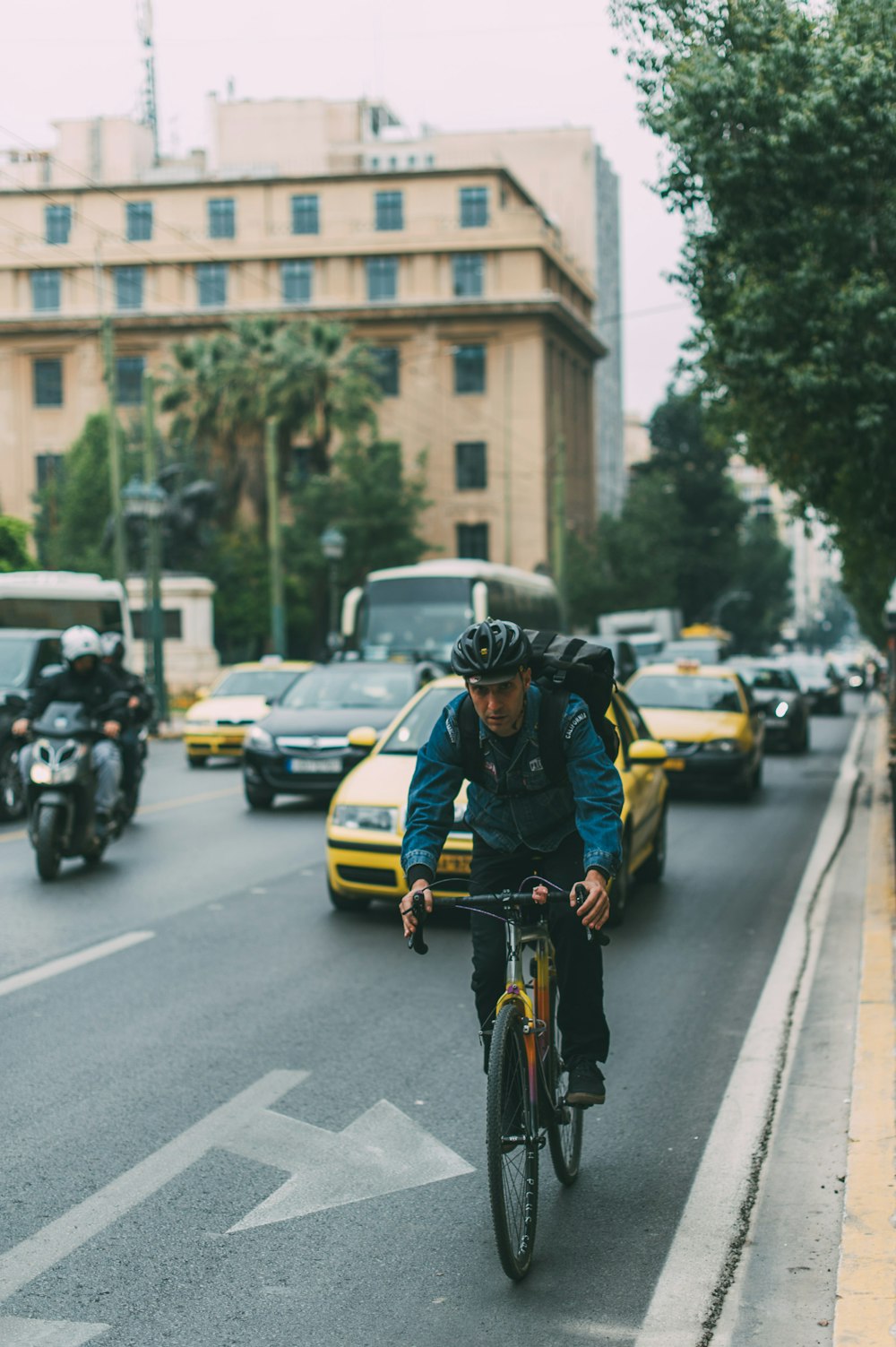
As mentioned above, get yourself a good quality rain jacket and rain pants. Try to aim for bright colors to make you visible in traffic. For your feet you could either go with a pair of waterproof work boots, or get waterproof foot covers.
With the above items your clothes should stay very dry on your commute even in a downpour. The biggest challenge then became how to keep the rain out of your eyes. It’s usually kind of dark when it’s raining, so you probably don’t want to wear sunglasses. I got a pair of clear safety glasses for dirt cheap. They work great!
For your head I prefer tucking the hood of my rain shell under my helmet and just letting my helmet get wet. This is great for several reasons. You can hang your helmet on your bike and not worry about it getting rained on when your bike is parked. Having your hood under your helmet allows you to pull the brim out front and over the upper edge of your glasses, further protecting your eyes from the rain.
To keep your laptop, pens, paper and other supplies dry you need a really good waterproof backpack. I use a pack from Timbukt2 that has been fantastic. I’ve biked in heavy downpours, and not so much as a drop of water has ever gotten inside.
Note that I prefer putting the backpack into my open top panniers most of the time to avoid showing up to work with a sweaty back.
Driving because it is raining is like using your car as a 3,000 lb motorized umbrella. What a waste! Get the right gear and biking in the rain changes from challenging to fun!
Snow
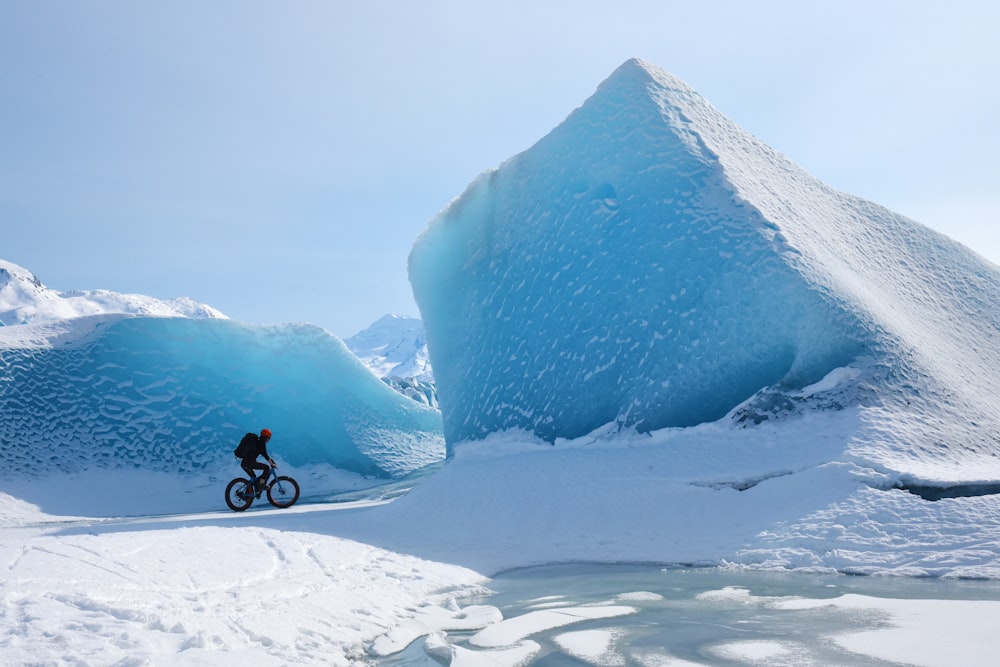
You probably get much better traction in the snow than you think!
Freshly fallen snow is a blast to ride through! I wouldn’t recommend railing the corners as hard as you might on dry asphalt, but otherwise just have fun! Oh, and make sure your tires have some knobs on them.
As the snow hangs around for awhile and gets more dense it becomes a bit more challenging if you have to ride through it. Hopefully by that point it has mostly been plowed out of your way.
The biggest challenge is that snow plows often use bike lanes as the location to deposit the snow they are plowing off the rest of the road. This forces you out into traffic. If the road is extremely slick, it may not be your bike’s traction that you have to worry about… Watch out for cars sliding into you! Perhaps try the sidewalk in this situation?
Use your brain. While biking in the snow (especially on a car-free bike path) is very fun and rewarding, if the ride becomes too treacherous due to crazy drivers it may be best to find another route, use the sidewalk, walk to work, or just work from home. Live to bike another day!
Ice

Sometimes snow will melt into water during the day, and then refreeze into ice at night. Ice can be difficult to walk on, let alone drive or ride a bike!
Never fear though, there is an answer…
These babies give you surprisingly great traction on ice! I’ve biked through 2 winters now (Now in the middle of my third), and ice has never stopped me.
I paid about $75 per tire. They aren’t exactly cheap, but they are well worth it if they keep you out of your car (or keep you from needing to own a car!).
Here is how the ROI on these worked out for me: On the low end, I think these tires let me commute for 2 months that I wouldn’t have the guts to do without them. Using the numbers from earlier in the article, the extra 2 months of bike commuting saves me about $660 per year. That’s an ROI of $660/$150 = 442%! Try to get that kind of return in the stock market . . . ha! Studded tires = money well spent!
Dark

If you bike every day, at some point you will find yourself biking in the dark.
For safety you should wear very bright clothes (some people like to use an orange construction vest), use a good bright handlebar light, and a bright flashing red tail light.
Bright tail lights have gotten really cheap. Planet Bike makes some nice ones.
Inexpensive handlebar lights will be bright enough to make you visible. However, the cheap ones do not seem to do a great job of lighting up the road ahead though. I prefer a nicer rechargeable handlebar light that is EXTREMELY bright so I can see where I’m going, and so I know it’s always charged. The one you opt for probably depends on how well lit the streets are in your area.
Security
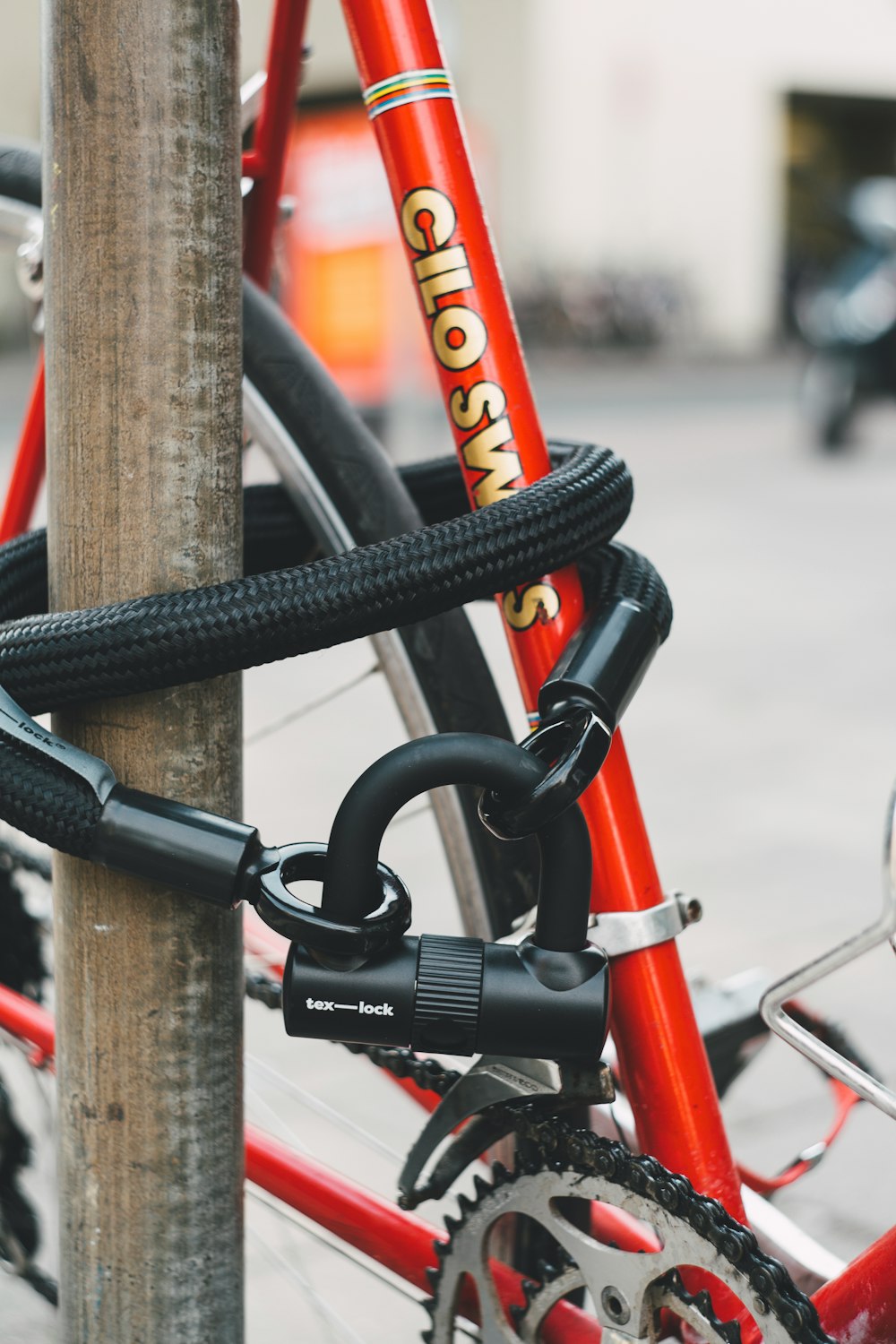
A good bike lock is a must. I prefer a beefy coiling or chain lock. I just leave it coiled over the bike top tube to facilitate fast locking and unlocking.
I don’t leave my fancy handlebar light on the bike, but I do leave the tail light and seat bag. I’ve never had any issues, but then again I live in a town where there is not a lot of theft.
Some people remove the bike seat to take with them, and make sure to lock both wheels to the frame. For me that is too much hassle. Hassle creates a barrier to use, and that might lead to a temptation to drive to avoid that hassle. However, if you live in a high crime city, you might have to adopt these more diligent security techniques.
Flat Tire Repair and Avoidance

I have a seat bag that attaches right under the seat. In it are two tire levers, a spare tube, and a patch kit. I have a pump that is mounted to the side of the water bottle holder. That’s really all you need to change a flat.
One trick is to keep a bottle of Stans No Tubes Tire Sealant at home. I make sure that the inner tubes I purchase have removable valve stems. Every three or four months I pop out the valve stems and add an ounce or two of Stans. This all but eliminates flat tires. I can only remember getting 1 flat in the past 2.5 years of bike commuting, and I live in an area notorious for inner tube-eating goat heads.
Another option is Slime Tube Sealant. My (anecdotal) experience with Slime is that it lasts longer than Stans (2 years vs. 3-4 months), but it is not quite as effective.
Another thing to consider is that not all tires are created equal. Some have a very stiff bead, and others are more supple. The stiff tires can be a royal P.I.T.A to get off and on the rim. I tried a pair of Armadillo tires for awhile that were supposed to be flat resistant. They probably will reduce the total number of flats, but when you do get one you are hosed. You need the strength of a super hero to get these tires back on the rim after changing the tube. I’d recommend sticking with something supple like the Clement X’Plore. It will ride nicer and be much easier to change when you do get the inevitable flat.
Tubeless tires are another way to go. They greatly reduce the number of flats. The only downside to these is that they can be expensive to set up. I’ll probably end up going this direction eventually. Even if you do have tubeless tires, you should still carry the spare tube just in case.
Errands
Many people site the need to run errands on their way home as a reason they don’t want to bike. I disagree with this completely! The need to run errands is a reason TO bike!
On a bike you don’t need to worry about parking. No more circling the parking lot or waiting for someone to pull out of their space. You just roll right up front like a rock star and lock your bike near the entrance!
“But Mr. DS, I have to get a bunch of groceries for the whole family! How on earth do I transport those on my bike?”
With the two large sturdy open top grocery bags that clip to the rear rack I mentioned earlier you can carry a ton of stuff! I once used a bungee cord to strap a 30lb bag of dog food over the top! Add in a backpack and you can carry a ton of food!
Still not enough space? You could outfit your bike with a front rack too! Even better, use a kid trailer! With all of these combined I could fit enough groceries to feed a family of four for a month!
Mr. Money Mustache even rigged his bike to be able to carry construction equipment and major appliances! If he can do that, you can definitely use a bike to get your groceries!
Airport

Think you have to hire an Uber or pay $20 per day to park your car at the airport? Think again! Strap that luggage to the rear rack and pedal!
No Uber fees, no parking fees . . . biking to the airport is sweet! Riding right past the parking toll booths and waving as you go by is a fabulous feeling!
Biking to the airport obviously assumes that you live reasonably close by. If you live several hours away this may not be feasible.
The Opinions of Others
When I first started my daily bike commute I was a bit self conscious about it.
Working in the construction industry, I occasionally need to go to large construction sites to check on our projects. I didn’t want to roll up on a bike and have the contractor think I was some sort of weird wussy hippy. I didn’t want to lose any respect.
Eventually my attitude changed. Fuck it. Biking is what I do and who I am. If using my own muscle to get to and fro in lieu of a 3,000 lb motorized wheel chair makes me a hippy then I guess I’m a hippy.
… and you know what? Despite my worries about what other people would think, most people end up thinking it’s pretty neat. And when I rolled into a construction site off an icy street on a sub-zero day in January on my bike . . . the gruff looking construction superintendent laughed and told me I was crazy, not wussy. The look in his eye was one of respect.
All you have to do is be confident in your choices and people will respect you.
Have you given bike commuting a try? How did it go? Got any tips or tricks that I missed? Let me know below!


There’s no such thing as bad weather, only bad clothing choices.
Today my bike commute home was in sleet and snow, with some rain mixed in. I loved it. Especially watching all the cars sit idle on the highway, not moving. Tomorrow we’re expecting 30-40mph winds here in the DC area, it’s gonna be fun!
That’s a good storm! Observing it from inside a dry rain shell and through some clear safety glasses sounds fun! Of course, now that you aren’t working anymore you’ll have to find a new excuse other than “commuting to work” to ride through the fun weather conditions… 🙂